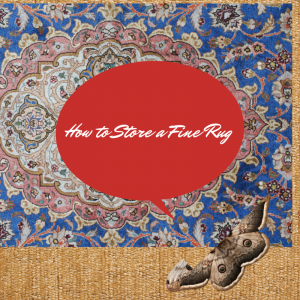September 26, 2014
How to Store a Fine Rug in Houston
Categories: News Storage Tips
 Many homeowners in Houston have started to furnish their homes with high quality imported rugs.
Many homeowners in Houston have started to furnish their homes with high quality imported rugs.
A fine rug can cost thousands of dollars, and most people treat them with the same respect that they treat a piece of fine art. Indeed, a truly fine Persian rug may have been handcrafted and taken months or years to finish, produced by a small set of of skilled artisans who have their skills passed down through generations.
If you’re planning a move or just need to store your rugs temporarily, you want to ensure you are protecting your investment. Damage is a real concern any time you place rugs in a secure storage unit, but you can prevent the most common types with a little foresight and some preparation.
Damage to Watch For
Water Damage It doesn’t have to flood to damage your rug. High humidity causes just as much damage. Mildew, mold and water stains aren’t apparent until you unroll the rug. Invisible microorganisms can also move into a damp rug, slowly weakening the fibers. These rugs become stiff and difficult to roll, or the backing material may begin to crack and deteriorate.
Insects Moths are the enemy of wool rugs, but almost any natural fiber can fall prey to these voracious feeders. Moths aren’t the only insects viewing your rug as lunch. Carpet beetles lay eggs in rugs and their larva feed on the natural fibers. Insect damage may show as bare spots or loose sections of pile. In severe cases you may have holes going all the way through the rug.
Storage Damage The way you store it can also cause damage. Roll it too tightly and you end up with flat pile and a rug that doesn’t want to stay unrolled. Stand it on one end, you may get a wrinkle or crimp in one end, or damage the fringe.
Dust and Dirt Although most people know not to store a dirty rug, dust and dirt in storage can also translate into stains. Dust stains are even more likely in humid or moist storage conditions. Your rug could even absorb unwanted odors during storage.
Rug Storage Tips
Fortunately, you can avoid rug damage by storing correctly and by taking the time to find the right storage rental unit.
- Clean the rug. Dirt can cause stains and dry rot. Even worse, food particles may attract insects that will move on to eating your rug after the food is gone.
- Control the climate. Select a temperature-and moisture-controlled storage unit. The fewer temperature changes and the lower the humidity, the less likely you are to unroll a moisture-damaged rug.
- Remove moisture. Make sure the rug is completely dry before you store it. If you recently had it cleaned, allow it to air out, unrolled, for several days so any remaining moisture in the fibers can fully evaporate.
- Roll it. Roll your rug with the pile inward, unless it’s silk. Silk rugs are rolled pile out to avoid damage. Remember to roll loosely and avoid forming any creases.
- Combat insects. Make sure the self storage unit treats for insects regularly and also treat the rug before you store it. Moth balls and other natural repellents work well, but they require reapplication every two years.
- Wrap it up. Although special rug bags are available that allow the rug to breath while keeping bugs, dust and moisture out, you can also use Tyvek. This material is used to form the moisture barrier on homes and you can find it at any hardware or home improvement store.
- Store the rug up high. Don’t ever lay the rug directly on the ground. Cement floors in storage units can transfer moisture into your rug. Worst case scenario, if there’s a flood your rug will be the first thing to go. Instead, store the rug rolled but laying flat on top of a table or pallet to elevate it a few inches off the ground. Also, don’t set anything on top the rug. Even light objects can cause damage if they are left on top the rug long enough.



